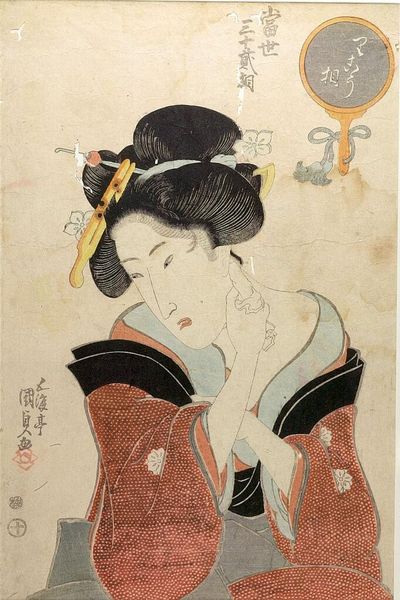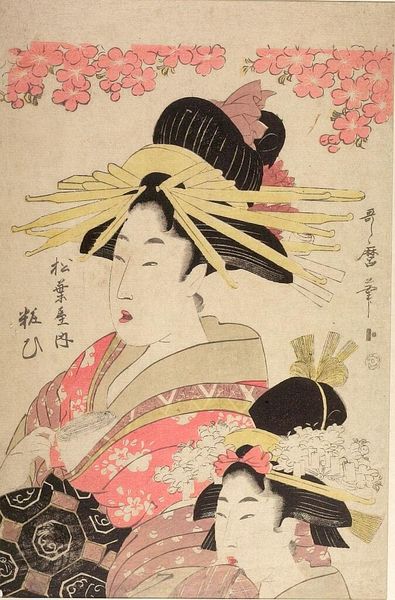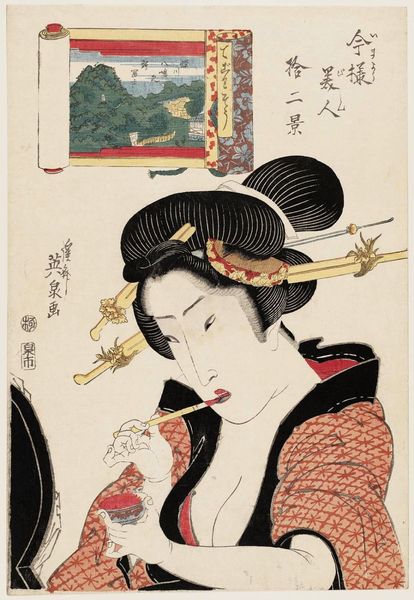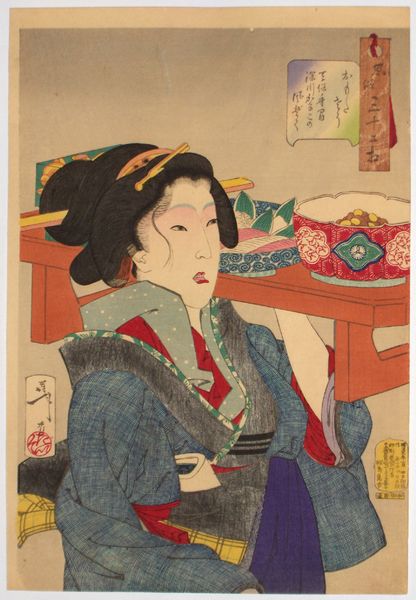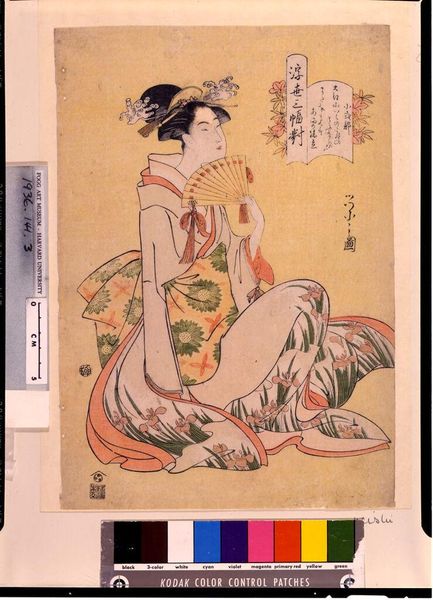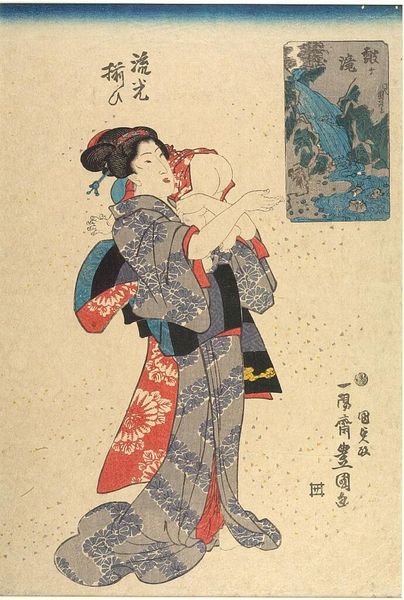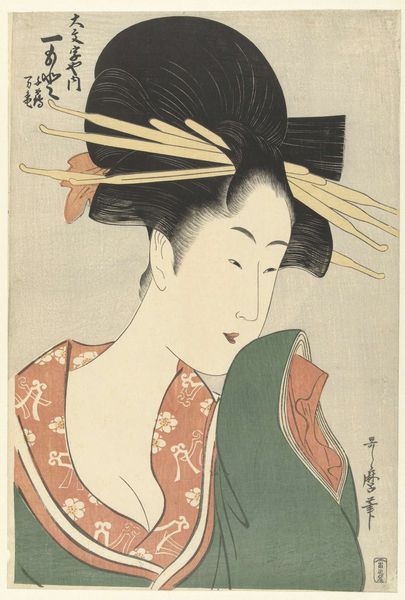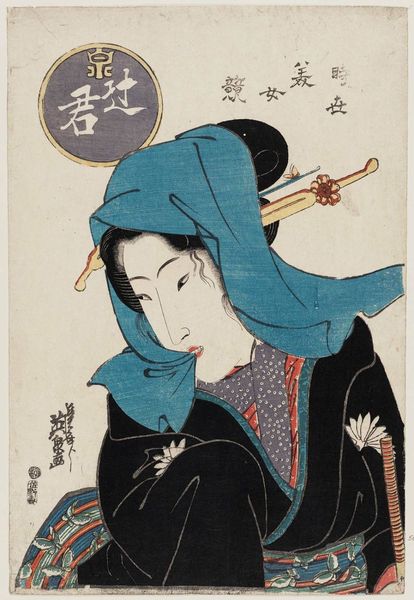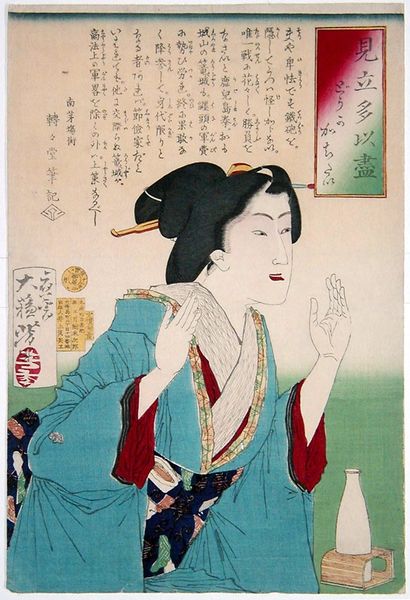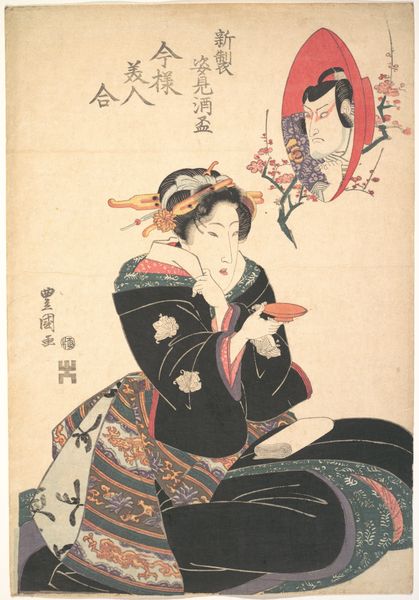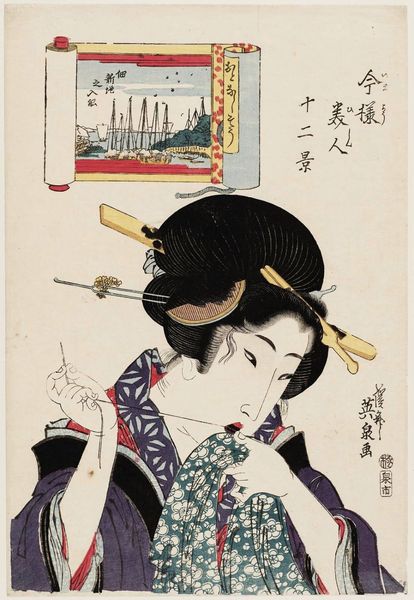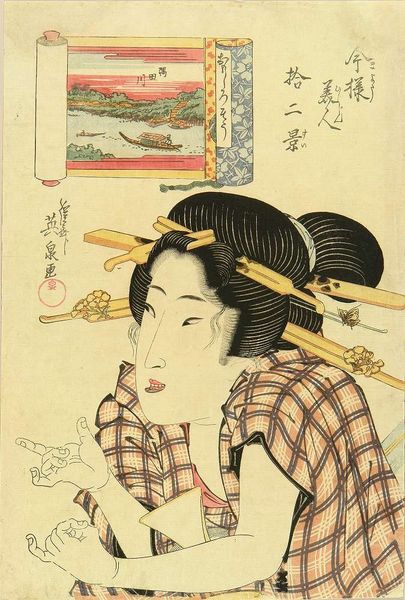
Copyright: Kiyokata Kaburagi,Fair Use
Curator: Kiyokata Kaburagi’s "Bijin - Light Snowfall," created in 1931, is a striking example of the Ukiyo-e tradition. What strikes you first? Editor: The layering. I mean, it’s right there in the way the fabrics overlap, each holding its colour. It is clearly a print, yet it has depth and dimensionality achieved via simple colors. The artist has chosen to leave bare the areas of paper in different small regions like her hands, or even parts of her garment Curator: Layering in prints echoes many layers of history. The subject, a Bijin or "beautiful person," hearkens back to classical archetypes. Her gaze seems wistful, evoking a sense of melancholy associated with fleeting beauty, a common theme in Ukiyo-e. Even the falling snow conveys something transitory, fleeting moments made permanent through symbolism. Editor: Fleeting, maybe. But what’s impressive is how the woodblock allows this seemingly fragile moment to endure. The wood, the paper, the ink—they're testaments to process and how each impression from the block embodies that repetitive, enduring work. And what kind of labour was involved to even create the individual blocks in the first place. Curator: Absolutely. But consider the semiotics embedded in the work. For example, notice how the subtle redness around her eyes contrasts with the blue in her garments. It speaks to underlying tension and inner emotion versus outward composure and decorum in depictions of feminine archetypes during that time. Also, did you notice that each little "dot" of snowfall seems very deliberate, and unique - not necessarily like some mechanic or rote procedure Editor: The blocks, of course, have everything to do with that! Each stroke, each indentation on the block that translates to the image speaks of physical touch and of deliberate handling of materials to accomplish something precise. Also I think to see so little paper texture here gives the "snowfall" effect a smooth background rather than the more organic quality of it landing on woven materials. Curator: A fascinating detail and good material analysis, thank you. It certainly reminds me of those universal, archetypal feelings we get when observing depictions of longing, melancholy, or the human condition in general, and it connects us to the deep human values embedded in artworks that stretch throughout time and tradition. Editor: Absolutely, and it highlights to me how much the medium matters. What starts with an image from wood takes shape and impression here through someone’s touch and intent, but its existence requires materials! These layers of labour embedded within the history behind any "snowfall" we may see here today.
Comments
No comments
Be the first to comment and join the conversation on the ultimate creative platform.
